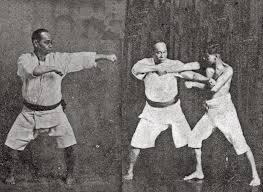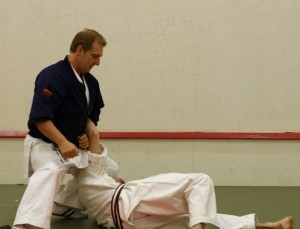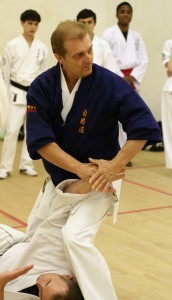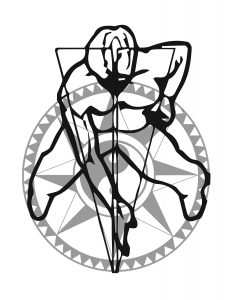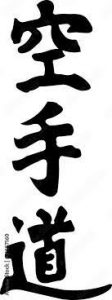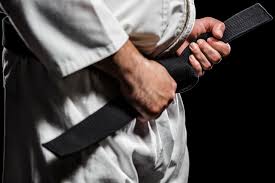It’s common for martial arts training to be tailored differently for adults and children, considering factors such as physical ability, attention span, and the depth of understanding. In the context of Shizendo Karate, the emphasis on traditional aspects, fighting arts, and self-defence application for adults reflects a more mature and comprehensive approach to training. Here are some aspects that may distinguish adults’ Karate training:
- Bunkai Emphasis: Bunkai refers to the analysis and application of techniques found in kata (pre-arranged forms). In adult Karate training, there is likely a more in-depth exploration of bunkai, with a focus on understanding the practical applications of each movement within the kata. This can enhance self-defence skills and provide a deeper insight into the martial art’s principles.
- Traditional Aspects: Adults may engage more deeply in the traditional aspects of Karate, including its history, philosophy, and cultural context. This broader understanding can enrich the overall experience and help students connect with the roots of the martial art.
- Fighting Arts and Self-Defence: Adult Karate training may include a more detailed study of effective striking, blocking, and counter-attacking techniques applicable to real-life self-defence situations. Training drills and scenarios may be more advanced, promoting practical application.
- Complex Techniques: Adult practitioners may be introduced to more complex techniques and combinations that require a higher level of physical coordination, control, and understanding. This complexity contributes to the overall skill development of adult students.
- Personal Development: Adult Karate training often emphasizes personal development, not just in terms of physical abilities but also mental discipline, focus, and stress management. The training becomes a holistic approach to self-improvement.
- Structured Progression: The adult syllabus may follow a structured progression that aligns with the physical and mental capabilities of mature practitioners. This ensures a systematic development of skills from beginner to advanced levels.
- Adaptability: Adult Karate training may include a level of adaptability, allowing practitioners to explore specific areas of interest, such as self-defence, sparring, or traditional kata, based on their preferences and goals.
The adaptation of training content for adults recognizes their capacity for a more nuanced and in-depth exploration of martial arts concepts. This approach aims to cater to the specific needs and aspirations of adult practitioners within the Shizendo Karate system.
Adult training focuses on the three concepts of our art; these are motion, manipulation and impact (mmi) class training consist of application to kata and traditional pairs work, then further explored and developed into a natural free flowing art. Shi Zen Do karate is a soft explosive art which uses harmonisation with the opponent rather than meet head-on, we unitise subtle techniques and angles of defence and attack; it is therefore a flowing art of non-resistance developing strategic skills in long and close quarter fighting.
Safety always comes first as your training partner is the uppermost importance when practising the art. Control is the art and the art is the control, are two aspects where we would judge your skill level.
Shizendo Karate specialty is in close quarter combat, using explosive punches and kicks with a tight defence built on agility through dynamic footwork and correct distance Maai. Embedded in softness, Juken is to feel through sensitivity rather than through line of sight. The effectiveness of this fighting method is using the opponents force, whilst adding your skill into the aggregate in the melee of combat. Shi Zen Do relaxed strength combined with the function of simultaneous attack and defence coordinating the hands and feet into multiple strikes utilising the strategic body positioning to subdue the opponent. The body positioning taught are the compass points, eight directions and is the strategy used in our system, the learning of angles are for the entry irimmi into the opponent’s space or for the turning Tenkan rather than meeting the opponent head on. The adult student will learn how to take control of the partner’s space and neutralise his/hers attack by utilising these angles. using multiple techniques of trapping, controlling with explosive powerful strikes, using dynamic footwork as part of its fighting arsenal. There are pre-set drills and unrehearsed drills to develop spontaneous reaction skills. Through relaxation and structure you’ll be able to build tremendous energy and mobility. You will learn how to correctly use this energy which will enable you to take advantage of the shortest possible distance between you and your opponent.
The grading syllabus is a comprehensive tool that guides students through a systematic progression of skills, reflecting their development from white belt to black belt. The journey involves dedication, consistent training, and a commitment to personal and martial growth.
“A good student equates to a good art”
.

